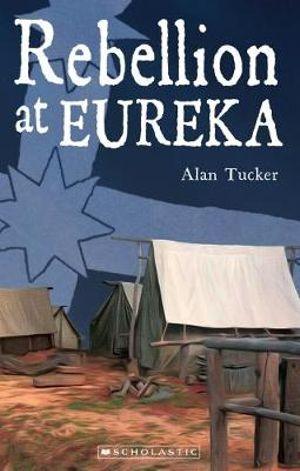Alan Tucker, Rebellion at Eureka, Scholastic Australia, April 2019, 192pp., RRP $16.99 (pb.k), ISBN 9781742994314
The moments when the miners took up arms at Ballarat is the setting for this historical novel about the Stockade. Alf and his mother leave Melbourne with horse and dray and arrive to set up a store in a tent on the goldfields. On the way they protect a young woman from danger. The marriage of his mother and father concern Alf, our narrator, because he can see it is on the rocks. Dad has left them for the Californian goldfields, but turns up in Ballarat with a group of his Californian friends.
It seems that Tucker’s main intention is to peel away the onion of the uprising to discover its reasons: the bullying police, the violence of the troopers, and the injustice and disregard metered out to the miners by the government of Victoria. Life on the goldfields was a struggle: gold was hard to find, competition was rife, chaos ruled. The Irish presence didn’t help. England failed to assist them during the potato famine, a situation which led to many leaving Ireland, taking their antagonism to the English with them.
Most of the characters Tucker writes about actually existed. Peter Lalor, James Scobie, Father Smyth, Mr and Mrs Bentley. Others are Tucker’s creation, but it is their interaction with the real people of Eureka that brings them alive.
The rebellion itself is described in detail. Twenty seven men and a woman were killed by the redcoats – martyrs to justice and proper representation we now agree. Five soldiers lost their lives. Tucker tells us a little of what happened later in a few pages of historical notes at the end of the novel, and in this year of elections we should be grateful to the diggers of Eureka.
Tucker has given us insight into what it must have felt like to be there in 1854.
Reviewed by Stella Lees






